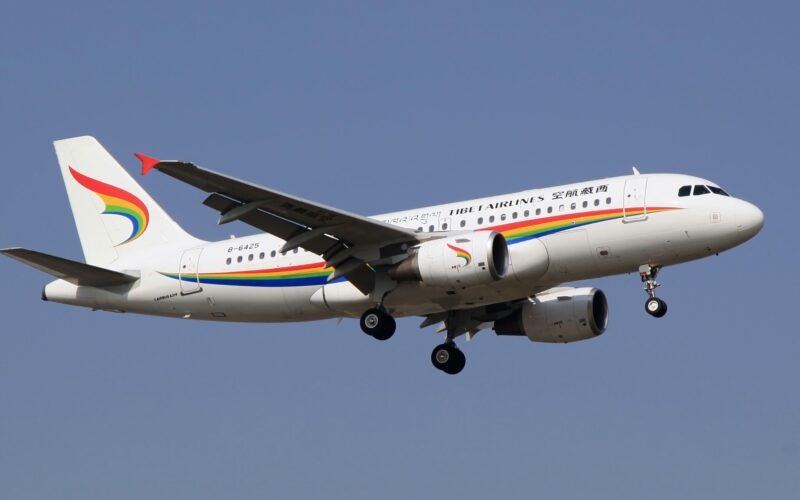A Tibet Airlines Airbus A319 passenger aircraft suffered major fuselage damage and caught on fire after experiencing an aborted take-off and runway excursion in the south-western city of Chongqing on May 12, 2022.
The Airbus A319-100, registered B-6425, was departing Chongqing Jiangbei International Airport (CKG) in China on domestic daily flight TV-9833 to Nyingchi Mainling Airport (LZY).
China News cited a statement made by the Civil Aviation Administration of China (CAAC) which explained that while the plane was accelerating for takeoff, the flight crew noticed an “abnormality”. The pilots aborted takeoff in line with emergency procedures.
The aircraft, which was carrying 113 passengers and nine crew members, veered off the runway and scraped its engines. Immediately after the attempt to abort takeoff, the left side of the aircraft caught on fire.
However, once the plane finally stopped between the two parallel taxiways outside of the runway, the crew initiated passenger evacuation and slides were deployed.
All passengers and crew managed to evacuate the jet. However, 36 people experienced minor injuries and were sent to local hospitals for examination, the aviation regulator added.
The nine-year-old plane suffered major damage to its fuselage, engines, and other parts and is considered beyond repair.
Confusion in the flight deck
An aircraft takeoff may be rejected for a variety of reasons, such as engine failure, activation of the takeoff warning horn, blown tires, or a system warning in the cockpit, AeroTime columnist and pilot, Captain Michel Treskin explained.
The information provided by China’s aviation regulator and local media reports paint a scene of confusion in the flight deck, he added.
“It was definitely a high-speed reject,” Treskin said. “The pilots might have selected the gear up too early, and the aircraft settled back on the runway. Or they rejected the takeoff after V1 (a maximum speed at which a rejected takeoff can be initiated in the event of an emergency, ed.-) and lost it.
“It is hard to assess what exactly caused the incident because we cannot see the under belly and the actual path of the aircraft on the ground.”

